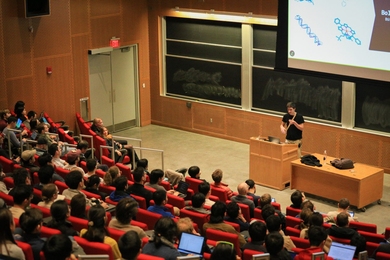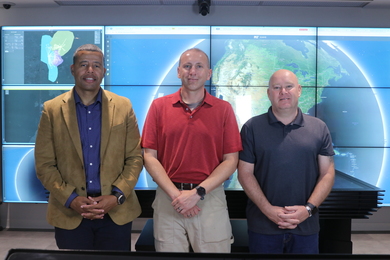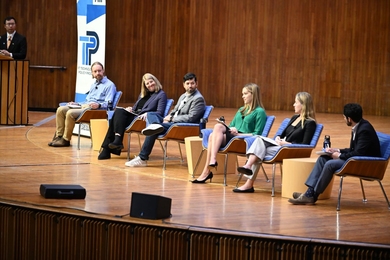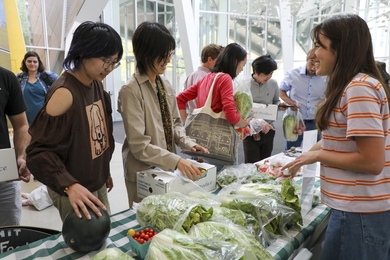In an appointment that will help MIT scientists portray the results of their work and continue a long-standing tradition at MIT of excellence in scientific photography, science photographer Felice Frankel has been named a visiting lecturer and artist-in-residence at the Edgerton Center.
In that capacity Ms. Frankel will work with UROP students to photographically document MIT research using imaging techniques like light- and dark-field microscopy and atomic force microscopy. In addition to creating beautiful photos, students will learn about the science each work of art illustrates.
Ms. Frankel's appointment is in keeping with the overall mission of the Edgerton Center, which was established in 1992 to carry on the successful "hands-on" teaching and research methods of the late Institute Professor Harold E. (Doc) Edgerton.
"Edgerton's lab was a place people went to for expertise in high-speed photography," said J. Kim Vandiver, professor of ocean engineering and director of the Edgerton Center. "I want to continue that tradition but also expand it to encompass photographic technologies that Edgerton himself didn't have access to.
"I want the Edgerton Center to become a place of expertise at MIT in scientific photography, and Felice will help kick that off."
Ms. Frankel notes that her photographs could supplement submissions to technical journals. An image she created with Professor George Whitesides at Harvard ran on the cover of Science in 1992 (see above) and in a new brochure for the NSF. "Aside from the public relations value of having an image from your article run on the cover of an important journal," she said, "more widespread use of innovative photographs [in technical journals] has the potential to substantially improve the quality of scientific dialogue."
Ms. Frankel's work will initially focus on images of research in surface chemistry. She plans to gather these for a book titled On the Surface of Things and for an exhibit at the MIT Museum. She will be working with Professor Toyoichi Tanaka of physics to capture the surface changes of gels, and with Professor Paul Matsudaira of biology and Daniel Ehrlich of Lincoln Laboratory to photograph the surfaces of microchips with applications in biology.
She urges MIT researchers in all fields, however, to get in touch with her if they are interested in her input on the visual representation of their work. She can be reached at
Ms. Frankel completed a Loeb Fellowship at Harvard in 1992 and was invited to speak about her scientific photography at the 1994 annual meeting of the American Association for the Advancement of Science. She has received grants from the National Endowment for the Arts and the Graham Foundation for Advanced Studies in the Fine Arts. Her work has been internationally published.
Her early experiences as a research assistant in molecular biology, and her continued interest in all aspects of science, has allowed for an understanding of its language and underlying principles.
Ms. Frankel said she is grateful to the Edgerton Center and the Office of the Arts (which supports the artist-in-residence program) for "recognizing photography's potential contribution to science."
A version of this article appeared in the October 19, 1994 issue of MIT Tech Talk (Volume 39, Number 8).





